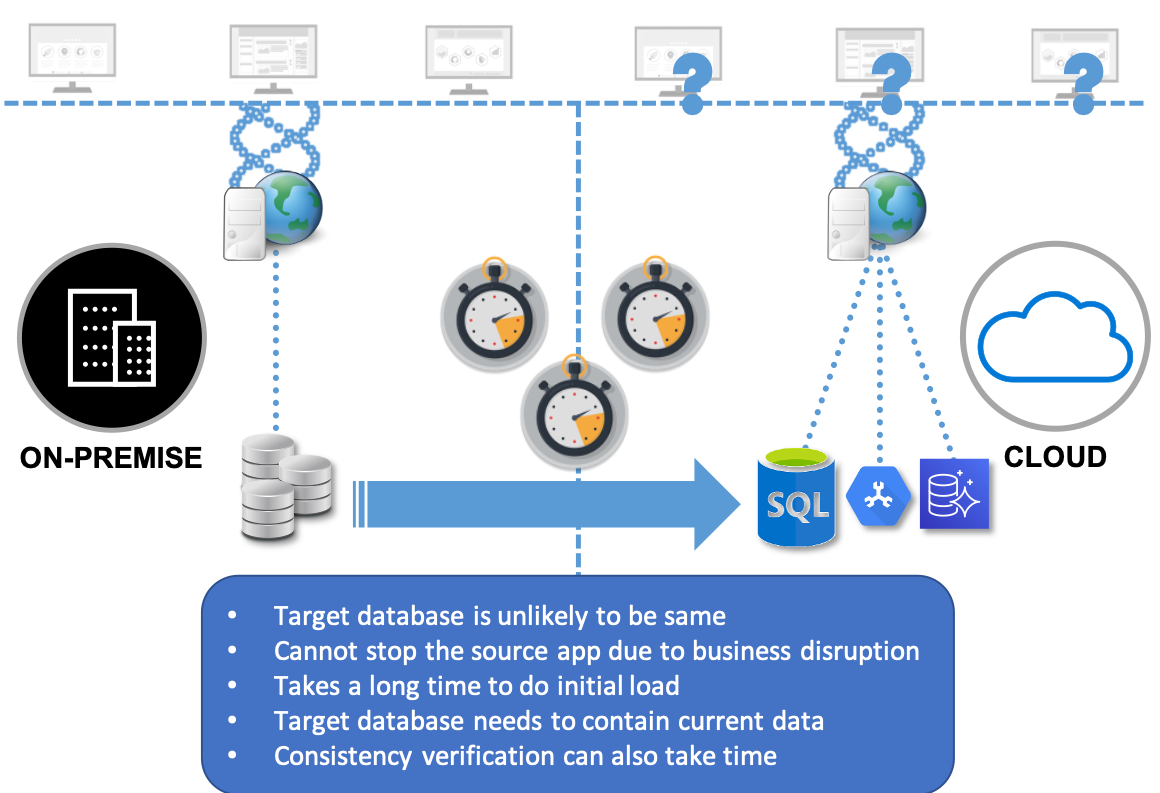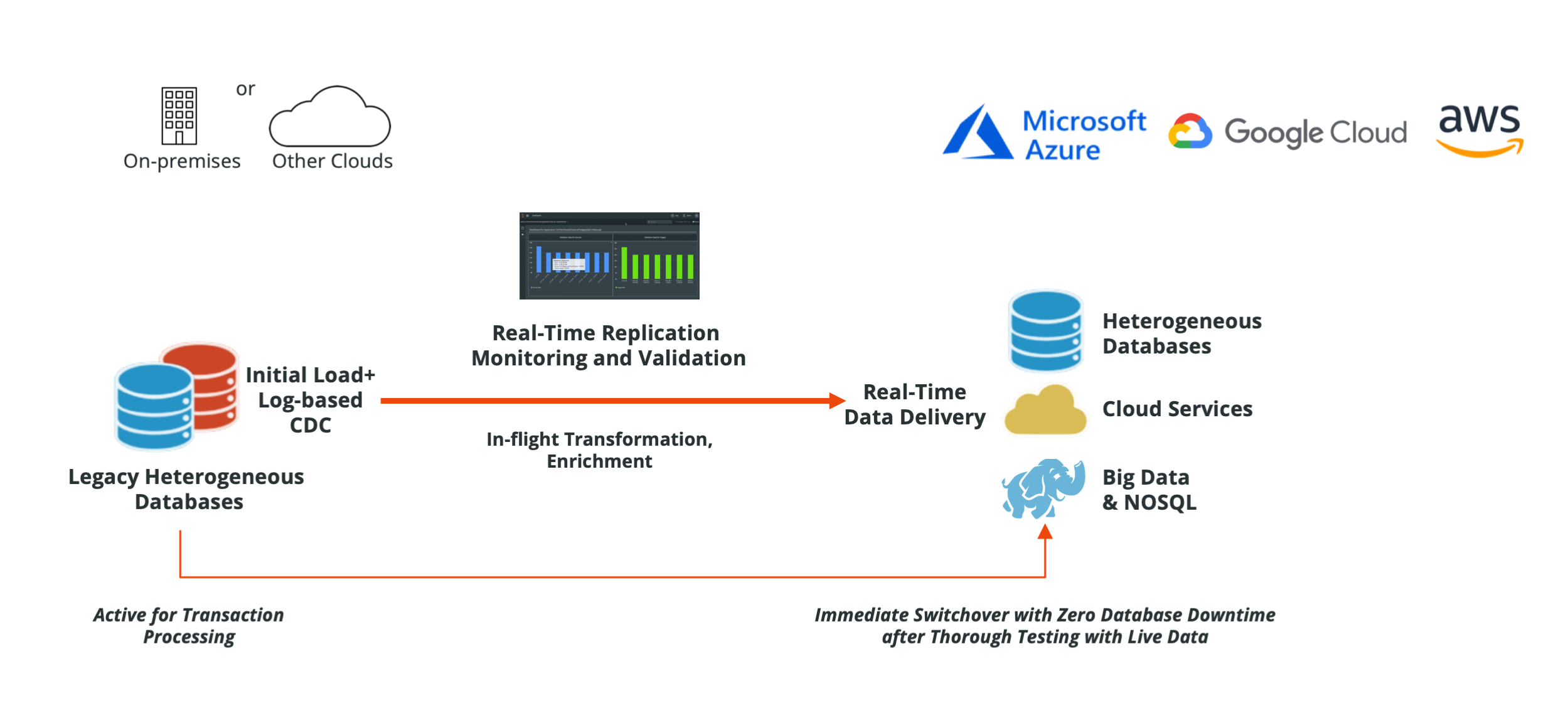Cloud computing has transformed how businesses use technology and drive innovation for improved outcomes. However, the journey to the cloud, which includes data migration from legacy systems, and integration of cloud solutions with existing systems, is not a trivial task. There are multiple cloud adoption risks that businesses need to mitigate to achieve the cloud’s full potential.
Common Risks in Data Migration and Integration to Cloud Environments
In addition to data security and privacy, there are additional concerns and risks in cloud migration and integration. These include:
Downtime: The bulk data loading technique, which takes a snapshot of the source database, requires you to lock the legacy database to preserve the consistent state. This translates to downtime and business disruption for your end users. While this disruption can be acceptable for some of your business systems, the mission-critical ones that need modernization are typically the ones that cannot tolerate even planned downtime. And sometimes, planned downtime extends beyond the expected duration, turning into unplanned downtime with detrimental effects on your business.

Data loss: Some data migration tools might lose or corrupt data in transit because of a process failure or network outage. Or they may fail to apply the data to the target system in the right transactional order. As a result, your cloud database ends up diverging from the legacy system, also negatively impacting your business operations.
Inadequate Testing: Many migration projects operate under tense time pressures to minimize downtime, which can lead to a rushed testing phase. When the new environment is not tested thoroughly, the end result can be an unstable cloud environment. Certainly, not the desired outcome when your goal is to take your business systems to the next level.
Stale Data: Many migration solutions focus on the “lift and shift” of existing systems to the cloud. While it is a critical part of cloud adoption, your journey does not end there. Having a reliable and secure data integration solution that keeps your cloud systems up-to-date with existing data sources is critical to maintaining your hybrid cloud or multi-cloud architecture. Working with outdated technologies can lead to stale data in the cloud and create delays, errors, and other inefficiencies for your operational workloads.
Upcoming Webinar on the Role of Streaming Data Integration for Data Migration and Integration to Cloud
Streaming data integration is a new approach to data integration that addresses the multifaceted challenges of cloud adoption. By combining bulk loading with real-time change data capture technologies, it minimizes downtime and risks mentioned above and enables reliable and continuous data flow after the migration.
In our next live, interactive webinar, we dive into this particular topic; Cloud Adoption: How Streaming Data Integration Minimizes Risks. Our Co-Founder and CTO, Steve Wilkes, will present the practical ways you can mitigate the data migration risks and handle integration challenges for cloud environments. Striim’s Solution Architect, Edward Bell, will walk you through with a live demo of zero downtime data migration and continuous streaming integration to major cloud platforms, such as AWS, Azure, and Google Cloud.
I hope you can join this live, practical presentation on Thursday, May 7th 10:00 AM PT / 1:00 PM ET to learn more about how to:
- Reduce migration downtime and data loss risks, as well as allow unlimited testing time of the new cloud environment.
- Set up streaming data pipelines in just minutes to reliably support operational workloads in the cloud.
- Handle strict security, reliability, and scalability requirements of your mission-critical systems with an enterprise-grade streaming data integration platform.
Until we see you at the webinar, and afterward, please feel free to reach out to get a customized Striim demo for data migration and integration to cloud to support your specific IT environment.























